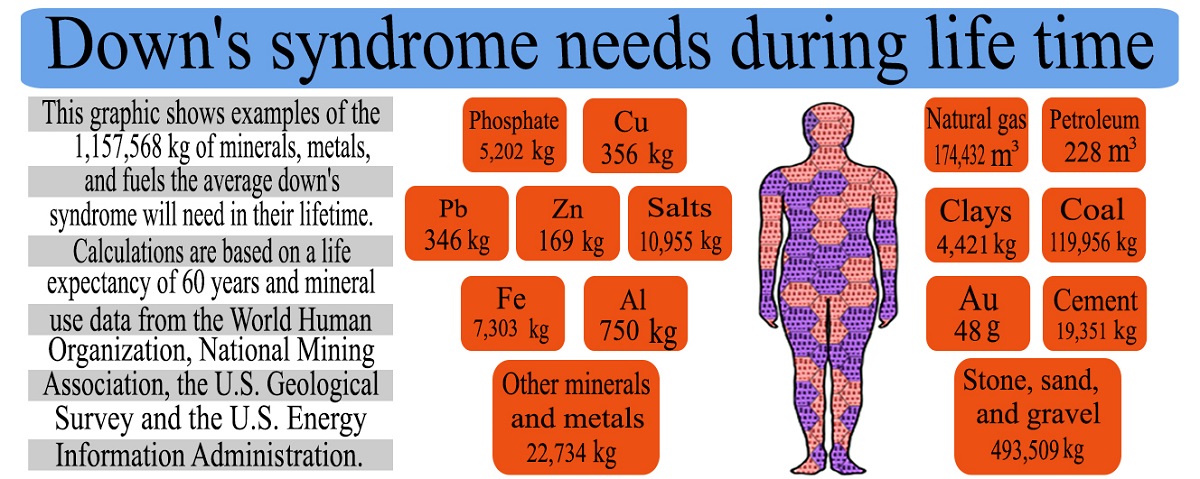To reduce the risk factors for mortality, the paper has focused on the assessment of the socioeconomic, clinical, physical, biophysiological, and biochemical characteristics of Down's syndrome which can be affected by the type of nutrition system, toxicity, and ecological footprint. Patients were males with trisomy 21 diagnosed by karyotype test and assessed by clinical examinations. Samples were collected from different biofluids. The physicochemical analyses of the biomatrix samples were performed and these properties had compared to findings of healthy males and age-matched controls. Duraphat application was proved effective for their oral treatment and saliva was the optimum biomarker for detecting malnutrition. Patients were hypersensitive to Cu while the Mn content in blood and hair was considered an expression to the degree of epileptic condition and chronic seizure development. The ecological footprint was 5.6 gha and carbon footprint was recognised in food poverty habits. These can be reduced by eating more plant-based proteins and fibre-rich foods with low saturated fats and sodium. The findings provide an up-to-date reference for expected developmental outcomes in children with DS in terms of biophysicochemistry. The genetically sensitive intervention is affected by heredity factor and sensitivity to toxics. Down's syndrome is encouraged to live green-hipster life.

